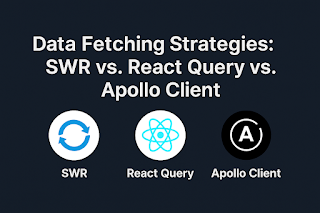Why FastAPI is Better Than Flask for Modern Web Apps
When it comes to building web applications with Python, Flask has long been a popular choice due to its simplicity and flexibility. However, in recent years, FastAPI has emerged as a strong alternative, particularly for building modern, high-performance web applications.
In this blog post, we will compare FastAPI vs. Flask across various parameters to understand why FastAPI is the better choice for modern web apps.
1. Performance and Speed
One of the most significant advantages of FastAPI over Flask is its speed. FastAPI is built on Starlette and Pydantic, utilizing asynchronous programming (async/await) to handle multiple requests efficiently. Benchmarks suggest that FastAPI is nearly as fast as Node.js and Go, making it an excellent choice for high-performance applications.
Flask, on the other hand, is synchronous by default and does not natively support asynchronous programming. While you can integrate async features into Flask with additional extensions, it does not match the out-of-the-box efficiency of FastAPI.
2. Built-in Asynchronous Support
FastAPI provides first-class support for asynchronous programming using Python's async and await keywords. This allows applications to handle thousands of requests simultaneously without blocking, making it ideal for APIs, microservices, and real-time applications.
Flask requires external libraries like aiohttp or gevent to achieve similar results, adding complexity to the project.
3. Automatic API Documentation
FastAPI automatically generates interactive API documentation with Swagger UI and Redoc. As soon as you define your API endpoints, FastAPI provides an interface to explore and test them.
Flask does not provide built-in API documentation, requiring developers to manually configure tools like Flask-RESTful and Swagger to achieve similar functionality.
4. Data Validation and Type Safety
FastAPI enforces data validation and type safety using Pydantic, ensuring that request and response models adhere to strict typing. This reduces runtime errors and improves code quality.
Flask does not have built-in support for request validation, requiring additional libraries like Marshmallow for similar functionality.
5. Dependency Injection
FastAPI comes with a powerful dependency injection system, allowing developers to easily manage authentication, database sessions, and other dependencies.
Flask lacks built-in dependency injection, often requiring developers to manually handle dependencies, leading to increased complexity and potential maintenance issues.
6. Microservices and Scalability
FastAPI is designed with microservices architecture in mind. Its asynchronous nature and dependency injection system make it a great fit for building scalable, cloud-native applications.
Flask can also be used for microservices, but scaling requires more effort, including using tools like Gunicorn and Celery to manage concurrent requests efficiently.
7. Community and Adoption
While Flask has a larger community and a vast ecosystem of extensions, FastAPI is growing rapidly and is now widely used by companies like Microsoft and Uber. Its adoption is increasing due to its modern approach to API development.
Conclusion
While Flask remains a powerful and flexible framework, FastAPI is the better choice for modern web applications due to its speed, async support, built-in API documentation, data validation, and scalability. If you're building APIs, microservices, or high-performance applications, FastAPI is the way forward.




Comments
Post a Comment